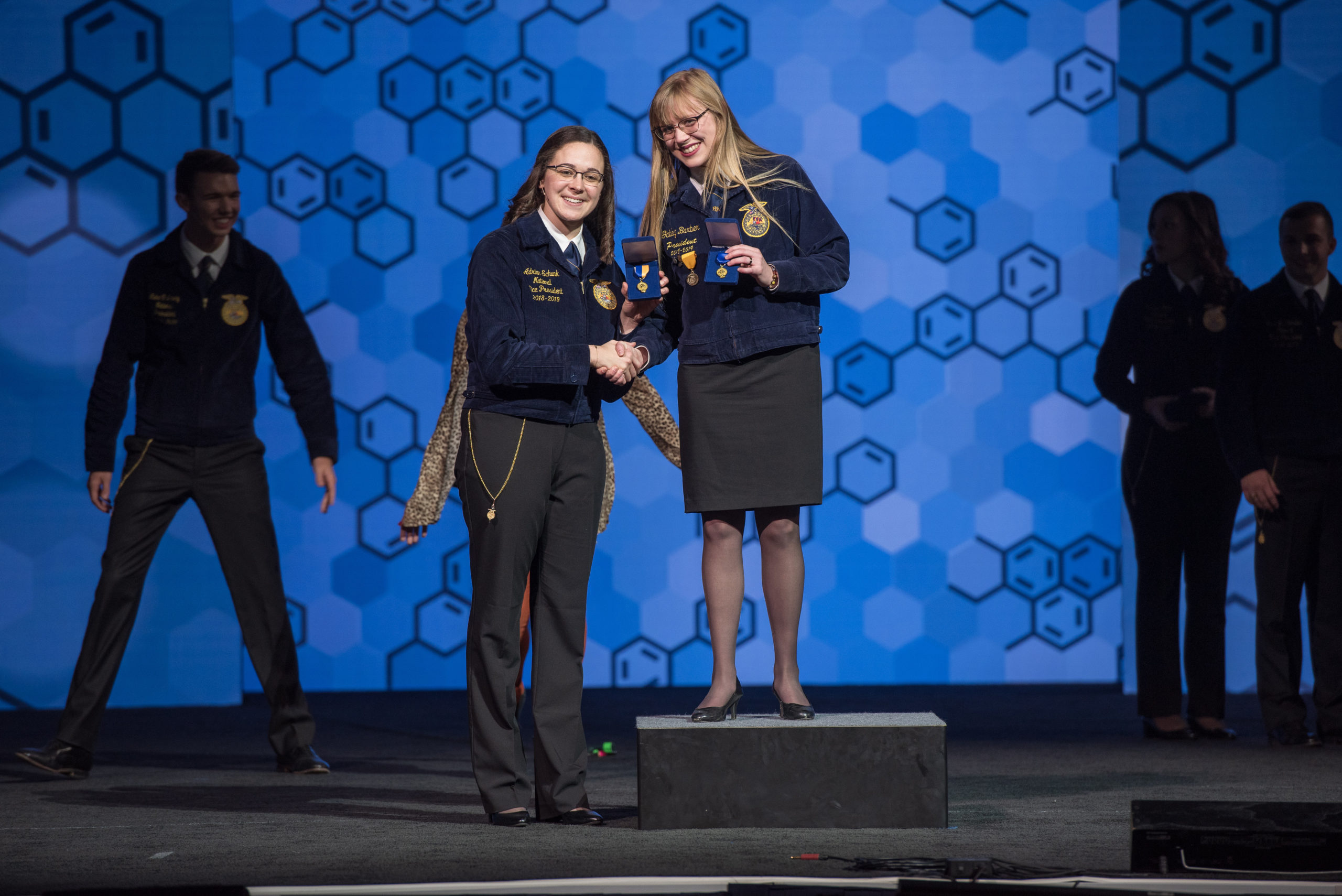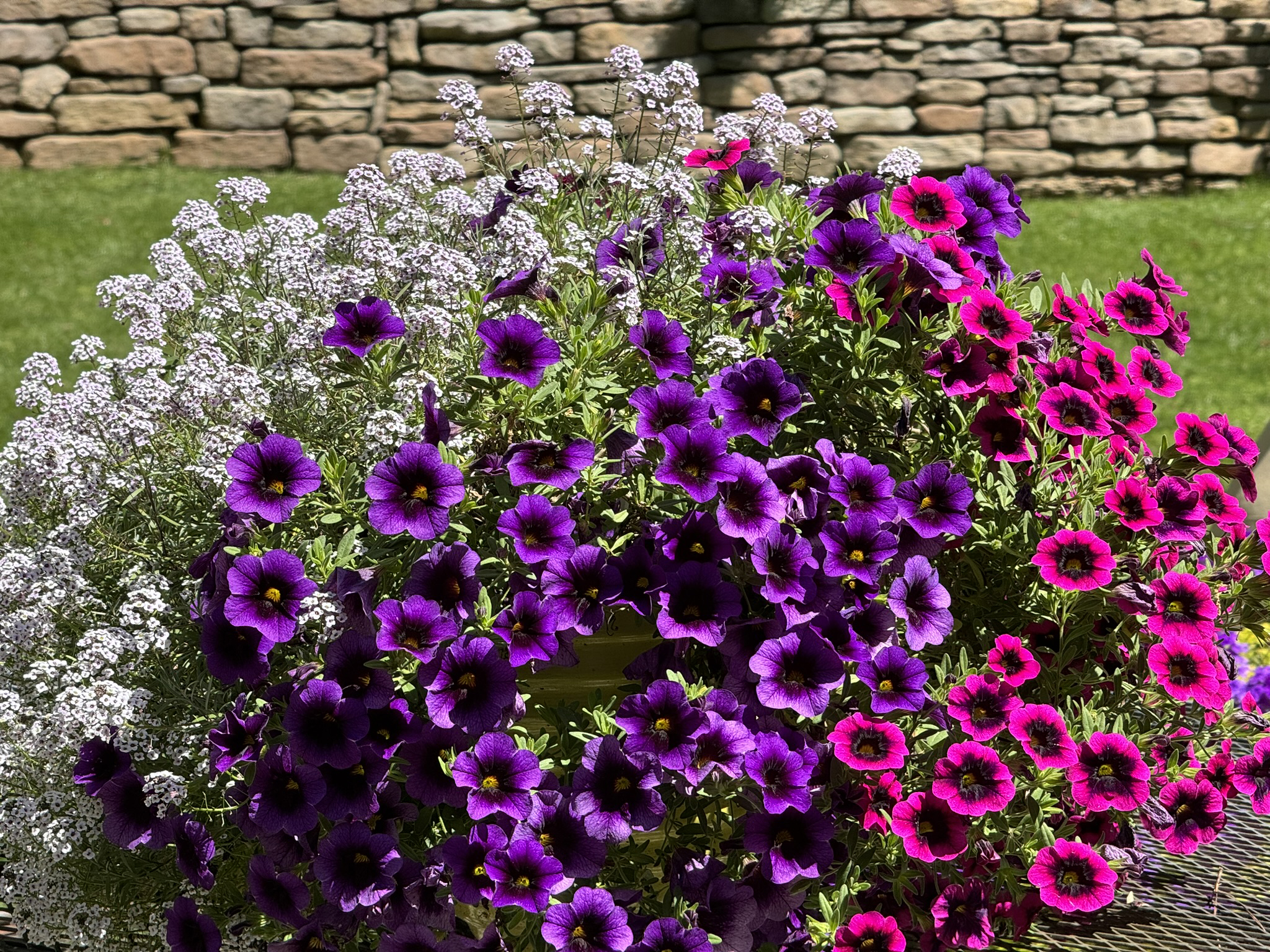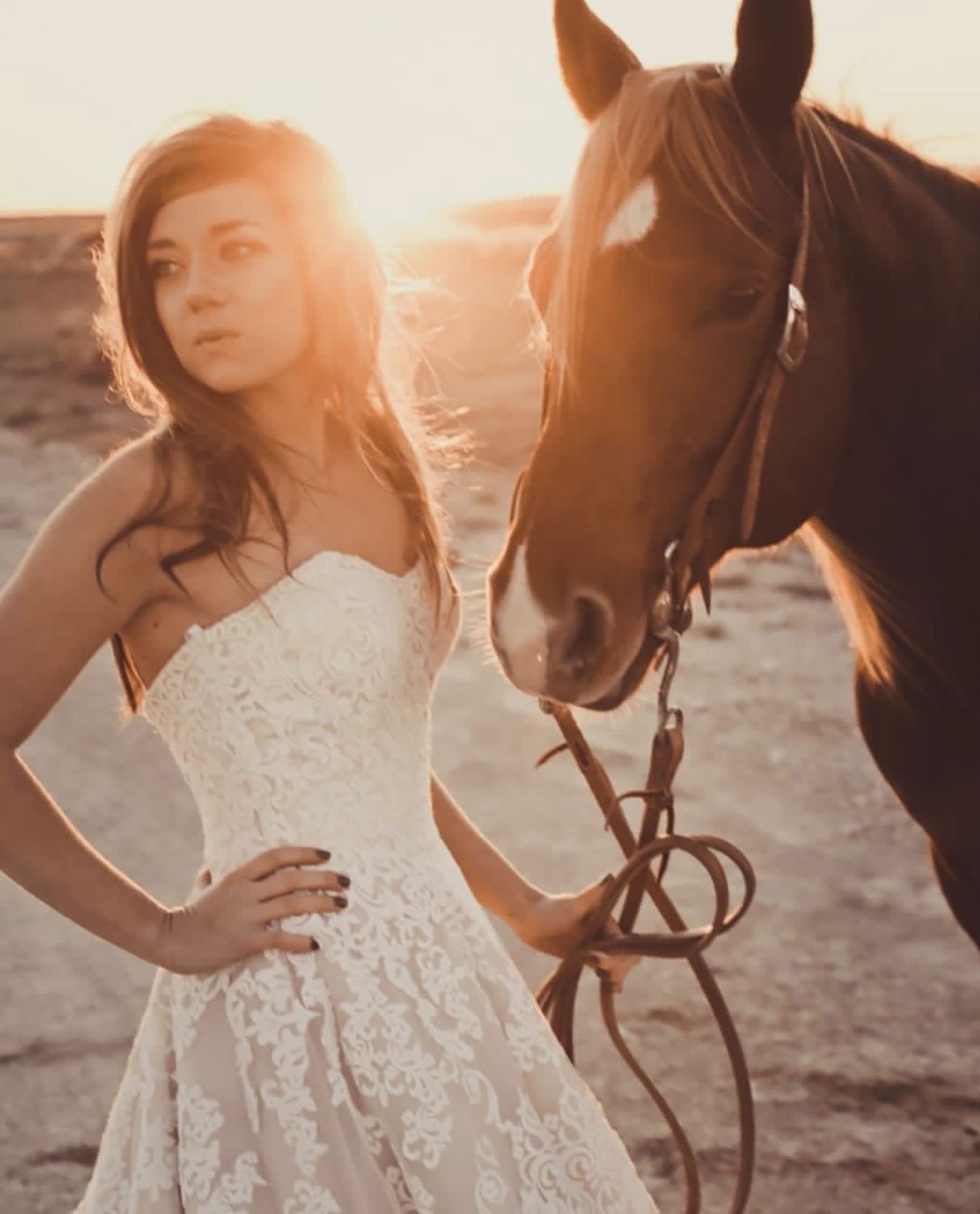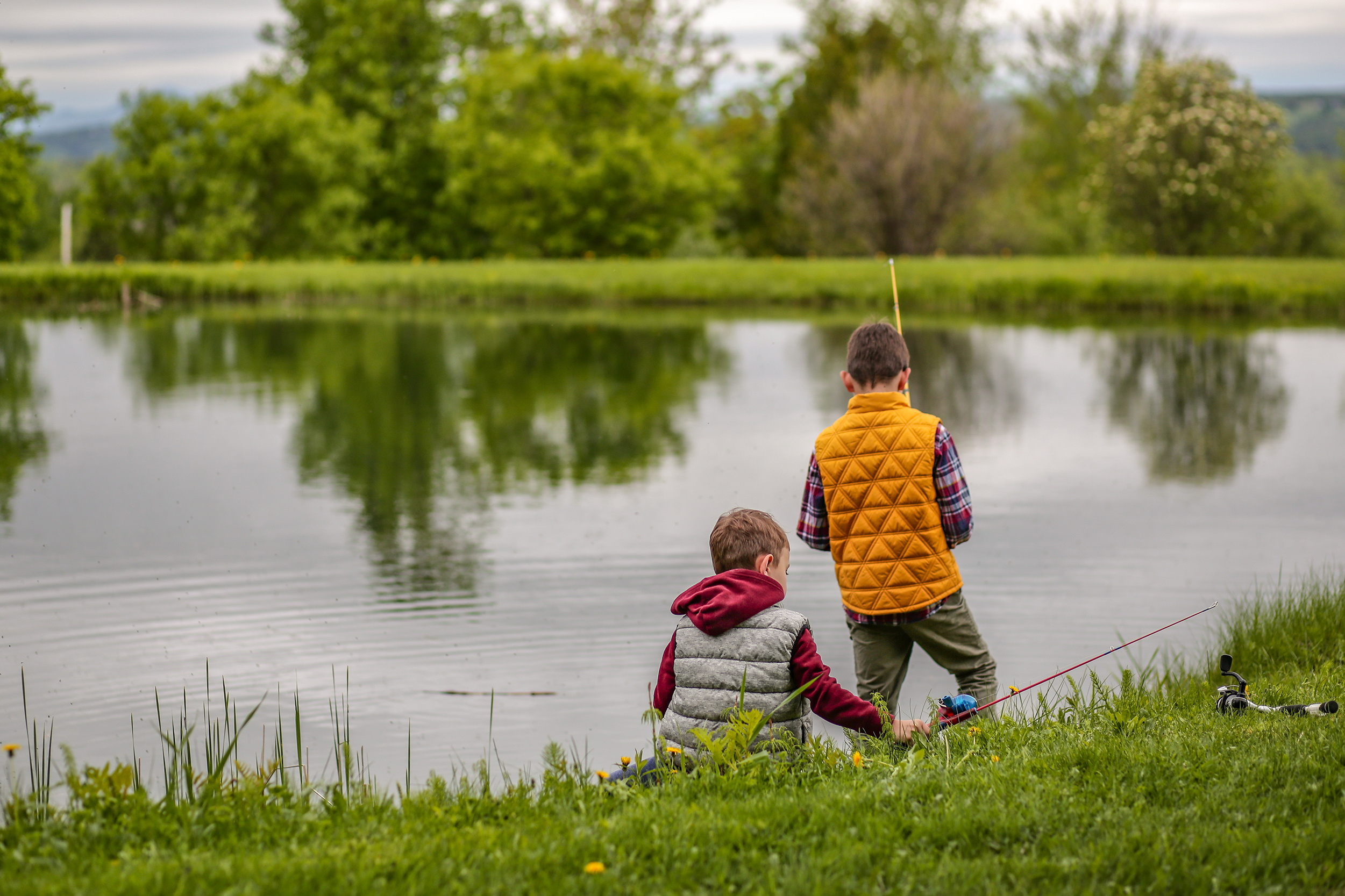Country Lifestyle
From Urban to Agriculture Advocate

An urban girl with no background in agriculture has won a prestigious award from a time-honored agricultural organization.
Gabby Barber was a member of the Lawton FFA Chapter located in Lawton, Oklahoma. Though FFA and agriculture is a core foundation of Oklahoma, said Lindsey Hoerbert, a Lawton FFA adviser. Barber had no knowledge or understanding of either until she was in the eighth grade, she said
During her five years of involvement in FFA, the once misinformed and uninvolved consumer transformed into not only an advocate for agriculture but a national champion within the FFA organization.
In October 2019, Barber earned the National Championship Agricultural Communications Proficiency award.
“Gabby is not what many think of when they hear FFA member,” Lindsey said. “She is a non-traditional [Oklahoma] FFA member. She grew up in town walking on the sidewalks to school. She isn’t an exception in our chapter. She is the [norm].”
Lawton is an urban area, Hoerbert said. The city’s population is more 150,000 people so this chapter is not a traditional FFA chapter for Oklahoma, she added.
The majority of the FFA chapter is comprised of urban students, Hoerbert said.
“I started FFA when I was in the eighth grade,” Barber said. “There was an ag exploration class, and my cousin Hannah showed sheep and was involved in FFA, so I thought I would give it a try. I thought showing animals was all you could do in FFA.”
As an eighth-grader, she was timid and shy, Hoerbert said. She was placed in an agriculture class she didn’t know much about, Hoerbery added.
“Of course, over time, Gabby bloomed with opportunity,” Hoerbert said. “She is an amazing public speaker and communicator. Gabby is really good at spreading the word of agriculture, whether it is the education aspect, what agriculture does, or the sustainability side.”
Barber said her agriculture teacher was the driving force kept her in FFA.
“The first day of class my ag teacher asked if I wanted to do prepared public speaking,” Barber said. “I said sure, thinking I would give a speech at a banquet or something. I had no idea it was a contest.
“I fell in love with it and kept doing it and kept adding on more things,” Barber said. “I started to realize I could really belong, and I found my place in FFA.”
Barber did not show animals during her time in FFA, but instead she focused her time on the communications for the chapter and other organizations she was involved in, Hoerbert said. She started as the chapter reporter in 10th grade, Hoerbert added.
Her agricultural communications Supervised Agricultural Experience project and proficiency was with her completing the reporter book, Hoerbert said. Being the communication committee chair, Barber managed the public relations for the chapter, she added.
“For my SAE, I was in charge of the newsletter we did for my city and also the one for my school and district,” Barber said. “I focused on writing, speaking and photography within my SAE.”
In Lawton, no one was taking pictures of the livestock shows, Barber said. She had seen some of the bigger shows like Oklahoma Youth Expo and Tulsa State Fair, and they all had professional photographers, she added.
“I love taking pictures,” Barber said. “This was a given, and my ag teacher had some connections with people who ran the livestock shows.
“I didn’t have a camera at the time, but my ag teacher did,” Barber said. “She lent me hers, and I started taking pictures at our shows. Eventually, we got a really neat technology grant at my school to where we got three brand new cameras.”
Barber’s passion for photography inspired her FFA adviser to contact a livestock photography company, Final Drive Photograhy, said Dusty Oldenberg, co-owner of Final Drive Photography and a mentor to Barber.
“We are a livestock photography company based in Oklahoma, but we travel all over the country taking photos of livestock shows as well as the Oklahoma FFA State Convention,” Oldenberg said. “Because of all the connections, Gabby came to work for us after her ag teachers asked if she could come in and help us out.”
The objective of Final Drive photography is to bring in youth who want to take pictures and teach them about how to use a camera, deal with the public, and work in the industry, Oldenburg said.
“We usually have livestock kids who want to take pictures,” Oldenberg said. “So, it was kind of a whole new round for us and an eye opener for both Gabby and myself in the sense she had a different perspective of the industry she wanted to show.
“She wanted to show people you don’t have to be a traditional ag kid, you don’t have to show livestock to do this thing,” Oldenberg said. “I probably learned more from Gabby than she ever learned from me.”
Barber’s focus is to communicate how agriculture works and its importance to the public, Hoerbert said.
“She had never been to a livestock show until we started teaching her how to photograph livestock,” Hoerbert said. “She had never been to a ranch until she was probably a junior in high school when she was giving speeches about different animal agriculture topics.”
Barber has a gift of relating to the public and explaining all aspects of agriculture, Hoerbert said.
“She was very good with the public and her communication skills are second to none,” Oldenberg said. “She has a love for agriculture, even though she doesn’t have the background, and she is adamant about educating the consumer, and I think it is something we as traditional agriculturists lack. I’m going to put all of us in this category.
“As agriculturalists, we don’t do a good enough job educating the general population,” Oldenberg said.
Barber was great at putting her own spin on it, making sure to show a side of agriculture the general public would understand and relate to, Oldenberg added.
“Every person she came in contact with would leave fully educated about agriculture,” Oldenberg said.
Barber’s background gives her the unique opportunity to relate with all sides and explain the truth to the public, Barber said.
“Only about 2% of the population is involved in agriculture, so there are many who have been misinformed and misled,” Barber said. “I’m a scientist and an agriculturalist. I have the confidence and education to correct someone when they say something untrue about agriculture. My background and knowledge of science allows me to do this.”
Barber is going to school at Oklahoma State University to major in biochemistry and molecular biology, Oldenberg said.
“She wants to do research to create genetically enhanced trees that have a natural fire retardant,” Oldenberg said. “She is very passionate about it. Her education has always been extremely important to her.”
On top of achieving what she has and educating others, Barber has consistently focused on her education, Hoerbert said. Of the more than 300 kids in her class, Barber was valedictorian, Hoerbert added.
“Even though she is not majoring in agricultural communications, she has a love and passion for agriculture,” Oldenberg said. “She will never stop advocating for agriculture, for us as farmers and ranchers, and educating the public about the truth.”
Barber has set the bar high for all FFA members, by proving non-traditional agriculture education students still have a place in FFA and anyone can make a difference in agriculture, Hoerbert said.
“Gabby and others like her are the future for agriculture,” Oldenberg said. “We as agriculturalists need to understand this, accept them, and help them.”
It is new era in agriculture, and it needs to continue to be recognized if agriculture is going to survive, Hoerbert said.
“We need more Gabbys in agriculture,” Oldenberg said.
Read more in the March 2020 issue of Oklahoma Farm & Ranch.
Country Lifestyle
Superbells Blackcurrant Punch

Rare Color for Baskets and Mixed Containers
By Norman Winter | Horticulturist Author and Speaker
The Garden Guy has become completely mesmerized by a bowl of blackcurrants. You can guess I am having a little fun with you. I am not talking about the fruit but the flowers referred to as Superbells Blackcurrant Punch.
This year most everything came through the winter including a few plants I am even asking where did you come from? The spring has been long, gloriously beautiful and still in progress and all of the Superbells calibrachoas taking your breath away with their beauty.
I have written about the ‘Punch Group’ but never about a single color. I love every one of them but this year I just have to dedicate a column to Superbells Blackcurrant Punch. Yes, I do have a couple of yellow bowls where they are showing out but in reality, they are mixed in a lot of my containers.
Superbells Blackcurrant Punch has won a ‘baker’s dozen’ of awards, Top Performers, and Perfect Scores north to south and east to west. Like the others they reach about 12-inches tall with up to a 2-foot spread. They obviously have some cold tolerance as mine have come through the winter. The caveat is they did spend five consecutive nights in the garage. Their beauty in March and April has defied logic.
The color which is so rare in the garden makes it a must have plant. I found a Proven Winners description from several years ago that nails it, Superbells Blackcurrant Punch has bright fuchsia-colored petals with velvety black centers and a subtle yellow in the throat. It will be hard to pass by if you are lucky enough to find them at the garden center.
Your success will come from growing them in containers with a very good potting soil. Give them plenty of sun. There is a lot of garden gossip that says you can’t grow them with Supertunias, Superbenas or a plethora of other plants because of different water requirements.
In the South we water containers and baskets every day unless we get rain. These containers drain freely so life is the same for all the plants. Since we water so frequently, we need to feed on a regular basis. The Garden Guy mixes up the blue water-soluble mix and feeds the container grown plants about every three weeks. At some point the Superbells Blackcurrant Punch will look tired and in need of a trim. This haircut so to speak will generate new growth, and blooms for the fall.
Your choice of partners is only limited by your imagination. I love them with Lemon Coral sedum, Superbena Cobalt verbena, Blush Princess sweet alyssum and mixed with other calibrachoas like Superbells Grape Punch and Magic Pink Lemonade. They are heavenly with Primo Wild Rose heuchera and Superbena Whiteout verbena.
All of the Superbells attract both hummingbirds and butterflies. The butterflies I have photographed so far have all been Eastern Tiger Swallowtails. You have to admit that’s not bad for flowers that are so pretty. Planting season is here, keep a spot open in your mixed-container recipes for Superbells Black Currant Punch or some of the other Superbells calibrachoas that now total 41. Follow me on Facebook @NormanWinterTheGardenGuy for more photos and garden inspiration.
Country Lifestyle
Western Housewives – June 2024

Life consists of small events that define us. Sometimes, it’s something as simple as eating cake with your two-year-old at midnight at your sister’s wedding. Sometimes, it’s something as painful as taking your two-week-old to the emergency room with RSV and living there for a week. Both are moments that changed me, and both are moments that I’ll remember forever.
Often my defining moments have happened on the back of a horse. I guess that is because that is where I have spent most of my life. It has made me pay special attention to each horse I have ridden during different stages of my life.
My first horse was a big bay horse that was must have reminded me of Greek mythology because it took me about two seconds to name him “Hercules.” He was the perfect mount for a five-year-old that acted tough but was secretly scared of her own shadow. Once I got Hercules, I could start going to work with my dad. We gathered wheat pastures and road pens, and he let me sit in the round pen on Hercules while he worked his sale horses. At the ripe age of five I was a pretty seasoned pen rider and had the sour disposition to prove it.
One morning we had a lot of wheat pasture freshies to turn out. Naturally, they ran off as soon as they got off the truck. Babies cry, and wheat pasture cattle run off the truck; I don’t make the rules.
My Dad had to leave me and get in front of the herd to keep them from crashing into the fence. I’m sure he told me just to stay put, but Hercules got excited by all the commotion and started following the impending stampede. Now I realize that I was safe the entire time, but, at that moment, I was certain my life was over. I was dramatic even as a youngster. Would Hercules ever stop? Would he try and jump the sprinkler tracks? What if he runs through the hot wire? And most importantly, what will I tell my friends?
About the time I was ready to jump into the dirt my Dad ran up beside me and helped me stop Hercules. I was safe, my adrenaline was pumping and I was promised an Allsup’s Coke for all my troubles. That was a defining moment in my life. I realized the more danger you got yourself in to, the much bigger the condolence award. As long as I was able to keep it to an Allsup’s Coke level of danger I would be just fine.
The next horse I truly loved was named “Alotofbull” He was anything but full of bull. He was big, cowy, and athletic. He scared me just a little but that’s what made me love him the most. My Dad and I won countless events on Alotofbull. My Dad has true horsemanship pumping through his veins, but I can only credit my riding success to Alotofbull. He made things easy for me and I felt I was nothing without him.
Even after all the ribbons, the moment I remember the most about him wasn’t in the showpen. it was in the middle of nowhere on a place we called “The Cain.” The Cain was where I spent many fall afternoons and summer mornings. It was full of Sandhills, cactus that were found of my backside every time my seat left the saddle, and absolutely no sign of civilization. We would push cows to water, move pastures, and do other slow-paced things that were good for the horse and for the mind. I loved it there.
One afternoon in the middle of June, my Dad and I were moving some cattle to water. After we were done we came upon a set of old pens that my Dad had branded calves in with his Dad a long time ago. My Dad got quiet and solemn. Traits that were unusual for him. He started to reminisce of times long ago and told me how much he wished all his kids had gotten to know his Dad before he had passed away many years prior. I was only 14 at the time, and I was having trouble holding back tears myself. I leaned forward and played with Alotofbull’s black mane. I knew my grandfather had been a special man and I knew my Dad had cherished him. It made me see my Dad in a different light going forward. Yes, he was strong and resilient, but he was also human, just like the rest of us. He had a vulnerability in his life, too. It was a moment that taught me not to be afraid to talk about the hard stuff but to always press on. No matter what.
Many years later, I found myself in beautiful Oklahoma on a horse named “Reuben.” He was my then-boyfriend’s horse and was the only quick and little horse I had ever ridden. He was spunky and made me feel like better help than I was as we gathered pairs to wean that morning.
The sun was just coming up over the cottonwood trees, making the dewy grass shine. I looked over at the man beside me and just knew I would spend the rest of my life doing this very thing with him. I didn’t care if we ever had money or much of anything, really. As long as we were together, loving God, and riding good horses, I didn’t care about anything else.
About 12 hours later, after a long day and a few incidents that may or may not have involved me getting run over by a yearling, that same man proposed to me. We had never talked about it out loud, but I guess God had put it in both of our hearts. It was a moment that, of course, changed the rest of my life. It taught me not to overthink things when they are right and that an Oklahoma cowboy was just what my life needed.
I’ve had many horses and many defining moments in my life. Sometimes, I have loved the horse, and sometimes, I have not. The same goes for the moments. Nevertheless, each horse and moment has taught me something. After all this time, I am convinced that no matter how old I get, I will never be too old to ride a good horse because I will never be too old for a defining moment.
That being said, if one or two of my life lessons could involve another Allsup’s Coke, that’d be all right by me.
Country Lifestyle
A Beginners Guide to Fishing

It seems that the subjects of countless profiles in the past year have mentioned, whether in passing or as part of a larger discussion, that the COVID-19 pandemic changed Oklahoma’s landscape in numerous ways. By and large, the overwhelming observation is that Okies in urban areas have begun migrating to the country, and are embracing the rural lifestyle. Small farms are popping up with a variety of animals, and gardens are being planted where there wasn’t one before.
It made me think that there are likely people out there who don’t know the basics of one of Oklahoma’s favorite pastimes: fishing.
With countless lakes, rivers, and streams teeming with a diverse array of fish species, Oklahoma offers ample opportunities for anglers of all ages and skill levels to cast their lines and reel in memorable catches.
If you’re new to fishing and eager to dip your toes into the water, don’t be afraid. Here are a few basic concepts to get you started.
Understanding Oklahoma’s Fishing Scene
Before you embark on your angling adventure, it’s essential to familiarize yourself with Oklahoma’s diverse fishing opportunities. From largemouth bass in the renowned Lake Texoma to catfish in the Red River, each region of the state offers its own distinct fishing experience. Consult resources such as the Oklahoma Department of Wildlife Conservation website and local fishing guides to discover prime fishing spots near you and learn about the regulations and licensing requirements specific to Oklahoma waters.
Gear Up
One of the first steps in getting started with fishing is acquiring the necessary gear. For beginners, a basic fishing rod and reel combo will suffice. Opt for a versatile spinning or spincast reel paired with a medium-action rod, which offers flexibility and ease of use for a variety of fishing techniques. Additionally, invest in essential tackle such as hooks, sinkers, bobbers, and a selection of artificial lures or live bait, depending on your preferred fishing style and target species.
Learn the Ropes
Before you hit the water, take some time to familiarize yourself with the fundamentals of fishing. Practice tying basic fishing knots, which are essential for securing your line and attaching hooks and lures. Watch online tutorials or consult instructional books and videos tailored to beginner anglers to learn casting techniques, proper rod handling, and best fish handling practices.
Choose Your Fishing Spot
Oklahoma boasts an abundance of fishing hotspots, ranging from expansive reservoirs and scenic rivers to hidden ponds and urban lakes. Consider factors such as proximity, accessibility, and the type of fish you’re targeting when selecting your fishing spot. Popular destinations for beginners include Lake Hefner in Oklahoma City, Lake Thunderbird near Norman, and the Illinois River in northeastern Oklahoma, known for its scenic beauty and excellent trout fishing.
There are also countless farm ponds, but, I hope it goes without saying, you must obtain the land-owner’s permission to access their lands and fish their ponds.
Follow Fishing Regulations
Before you embark on your fishing excursion, familiarize yourself with Oklahoma’s fishing regulations and licensing requirements. The ODWC website provides up-to-date information on fishing seasons, bag limits, size restrictions, and license fees. Remember to obtain a valid fishing license and any additional permits required for specific fishing locations or species, as failure to comply with regulations can result in fines and penalties.
Practice Patience and Persistence
Fishing is as much about patience and persistence as it is about skill and technique. Be prepared to spend time waiting for the fish to bite, and don’t get discouraged if you don’t reel in a trophy catch on your first outing. Experiment with different baits, lures, and fishing techniques, and don’t be afraid to seek advice from experienced anglers or local bait shops. You’ll soon become more proficient and confident in your fishing abilities with practice and perseverance.
By gearing up with the right equipment, learning essential fishing skills, choosing the perfect fishing spot, following regulations, and embracing patience and persistence, beginners can set themselves up for a rewarding and enjoyable fishing experience in the Sooner State.
References:
Oklahoma Department of Wildlife Conservation (ODWC). “Fishing Regulations.” wildlife.ok.gov/fishing/regulations
ODWC. “Fishing in Oklahoma.” wildlife.ok.gov/fishing
-

 Country Lifestyle7 years ago
Country Lifestyle7 years agoJuly 2017 Profile: J.W. Hart
-

 Outdoors6 years ago
Outdoors6 years agoGrazing Oklahoma: Honey Locust
-

 Country Lifestyle3 years ago
Country Lifestyle3 years agoThe Two Sides of Colten Jesse
-

 Outdoors4 years ago
Outdoors4 years agoPecan Production Information: Online Resources for Growers
-

 Equine7 years ago
Equine7 years agoUmbilical Hernia
-

 Attractions7 years ago
Attractions7 years ago48 Hours in Atoka Remembered
-

 Farm & Ranch6 years ago
Farm & Ranch6 years agoHackberry (Celtis spp.)
-

 Outdoors3 years ago
Outdoors3 years agoSuzy Landess: Conservation carries history into the future




